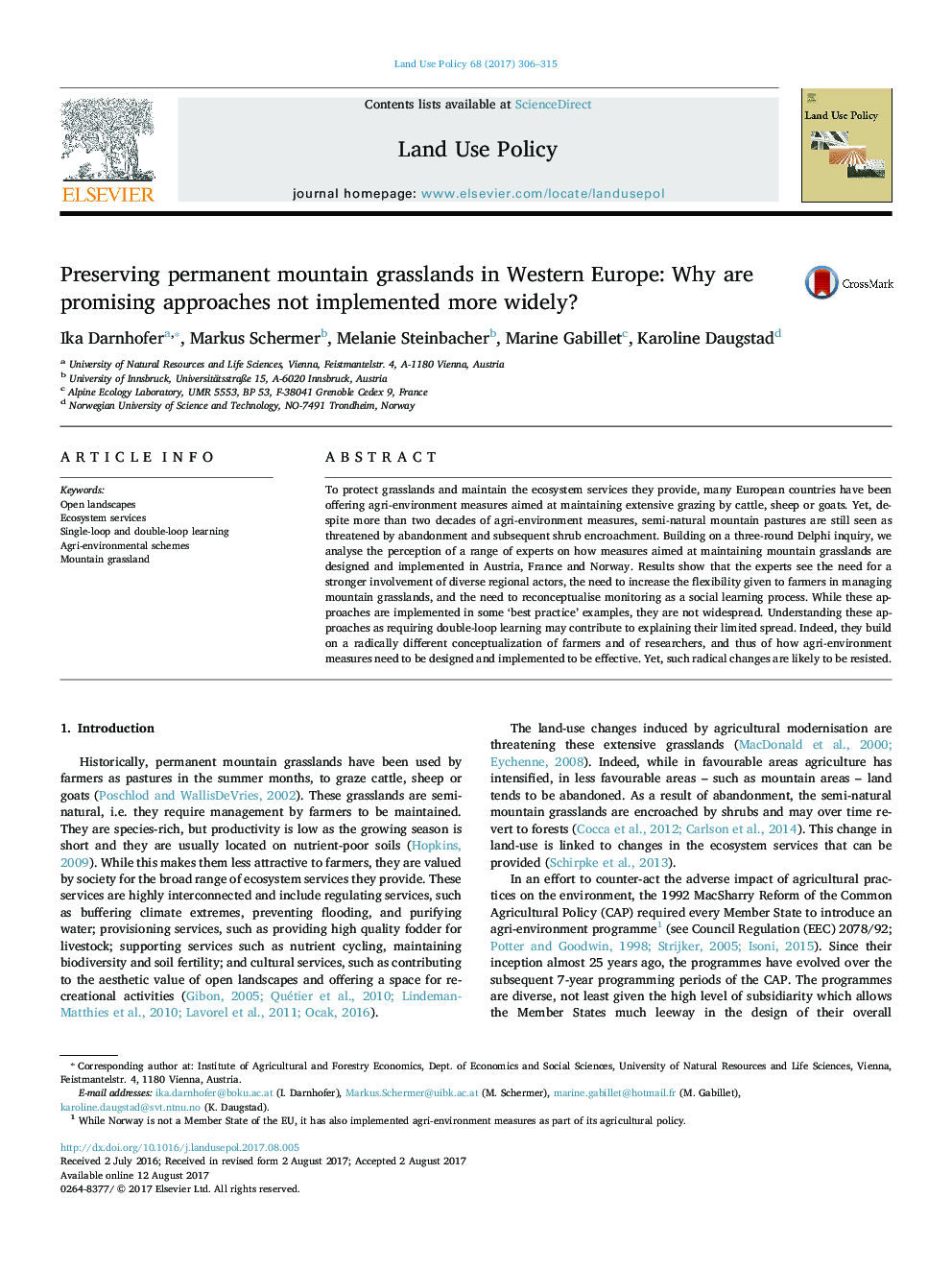| Article ID | Journal | Published Year | Pages | File Type |
|---|---|---|---|---|
| 6460541 | Land Use Policy | 2017 | 10 Pages |
To protect grasslands and maintain the ecosystem services they provide, many European countries have been offering agri-environment measures aimed at maintaining extensive grazing by cattle, sheep or goats. Yet, despite more than two decades of agri-environment measures, semi-natural mountain pastures are still seen as threatened by abandonment and subsequent shrub encroachment. Building on a three-round Delphi inquiry, we analyse the perception of a range of experts on how measures aimed at maintaining mountain grasslands are designed and implemented in Austria, France and Norway. Results show that the experts see the need for a stronger involvement of diverse regional actors, the need to increase the flexibility given to farmers in managing mountain grasslands, and the need to reconceptualise monitoring as a social learning process. While these approaches are implemented in some 'best practice' examples, they are not widespread. Understanding these approaches as requiring double-loop learning may contribute to explaining their limited spread. Indeed, they build on a radically different conceptualization of farmers and of researchers, and thus of how agri-environment measures need to be designed and implemented to be effective. Yet, such radical changes are likely to be resisted.
